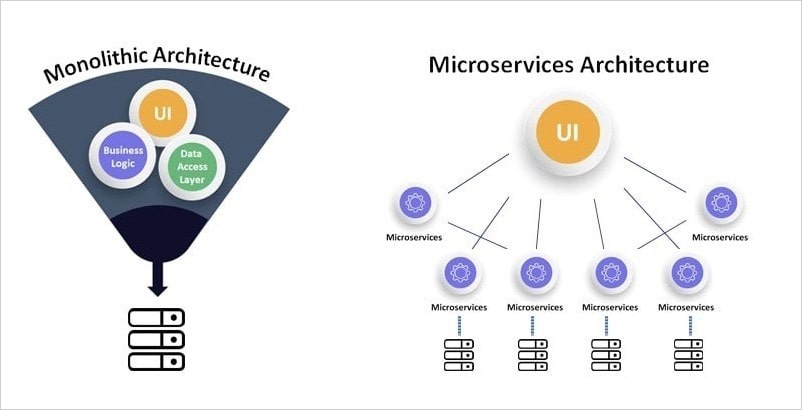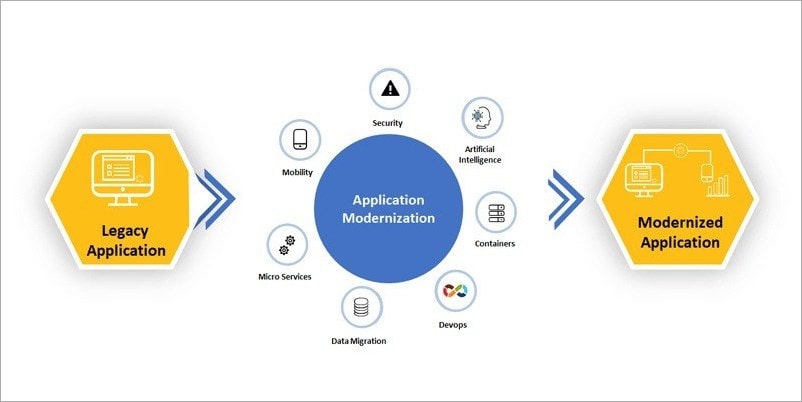September 22, 2021 By: Tanuj Singh
For global organizations that are embarking on a digital transformation journey, application modernization is a key imperative. Maintaining and managing legacy systems limits the organization from achieving true innovation and service modernization. Application modernization enables organizations to achieve business agility and drive innovation with the migration of legacy systems to new platforms.
Organizations must adopt a long-term strategic view to application modernization instead of treating it as a tactical project to develop and build on systems, processes and technology. As organizations are moving away from satisfying customers to delighting them, the limitations of legacy systems will influence the way organizations to function in a highly competitive landscape that is constantly evolving.
Evaluating Your Application Ecosystem
As new applications and platforms are developed and deployed, the established legacy applications may still be necessary to carry out core business operations. A thorough evaluation is required to understand the full scope for modernization as multiple processes rely on its operations for seamless service delivery.
A typical enterprise may have a number of applications with dependencies across multiple processes and technology ecosystems and are often built to meet the compliance requirements of these processes. The sheer complexity of migration and the challenges around business continuity must be thoroughly evaluated and understood to avoid service disruption.
Transitioning from Monolith to Microservices
The legacy systems or monolithic applications are difficult to update and expensive to scale to meet the new business needs. The architectural framework makes it difficult to add additional features due to the system complexity and added challenges that prevent scalability for the same reasons. The common approach used for application modernization involves refactoring, breaking down a legacy application into smaller microservices.
Figure 1

Figure 1 illustrates how a legacy application is broken down into a collection of microservices encompassing all the individual services within a larger framework with its own data model and database.
A phased approach to migration, known as “strangler pattern” incrementally replaces functionalities of the legacy system with new applications and services. In this phased approach, eventually, the new application replaces all the features of the legacy system without any major disruption to business units.
Re-platforming or re-hosting applications is a critical part of the modernization process. Organizations have a broad range of technology portfolios that they can take advantage of to facilitate modernization within their organization. Depending on the business need and security priority, latency and other architectural reasons, organizations may choose between, public, private, hybrid or multi-cloud strategies.
Business Value – Process Vs System
The driving force behind modernization is not system replacement but process improvement that can drive business agility and scalability. The complex undertaking of removing or replacing an entire class of systems or applications that support core operations should have sound business justification and thorough risk-reward understanding.
With successful modernization, organizations can truly leverage the technology for process improvement to drive greater customer experience and acquire more market share. With global attention on preparedness for another event like the current pandemic, application modernization has moved from organizational wish-list to organizational need for a robust contingency plan and seamless business continuity.
The First Step
Figure 2

To harness the true potential of modernization, organizations must approach technology in the business context. The first step towards modernization should be about understanding which business processes can make the greatest impact on driving the organizational goals through application modernization. A clear view of high-value assets and the impact of modernization for better scalability, security and performance should be laid out to all stakeholders. All due concerns pertaining to supporting resources both business and IT should be addressed to assess disruption caused by business process change.
In addition, organizations need to measure application performance post-modernization to understand the outcome in terms of how the application functionality has changed and ensured optimization.
Even with all factors weighed in, some organizations have failed to modernize their legacy systems due to inaccurate planning, delays, cost overruns, etc. An experienced partner can help you identify your most important business drivers, develop a customized plan based on your IT landscape and provide project management, coding and implementation support throughout the process. To conclude, application modernization is a huge undertaking that requires meticulous planning, quality practices, a blend of the right technology and expert resources with a clear view of the big-picture.
While some organizations have already embarked on the Application Modernization journey, some are still mulling over it. Keeping in view the current scenario, every organization needs to expedite to provide agility and scalability to the business and ensure better preparedness for another unknown crisis in the future.



